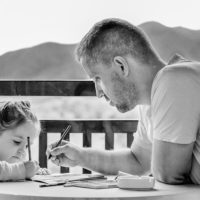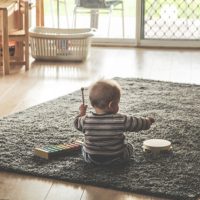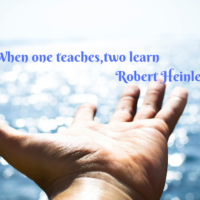What we learn with pleasure we never forget.”
Alfred Mercier
Child's playspace
How is your child’s playspace structured?
Is it organized ,are the areas clearly defined areas and communicate expectation?


Child's Focus
Is your child easily distracted engaging briefly with an adult,toy or materials then moves quickly to others?
Please note that this post may contain affiliate links and any sales made through such links will reward me a small commission – at no extra cost for you. PLEASE READ MY DISCLOSURE FOR MORE INFO.
It has been well demonstrated that the child’s physical environment plays a crucial role in learning and development. This is even more important for children with special needs .For instance, a child with autism greatly benefits of an environment that is clearly defined and communicates expectation .
“Numerous studies have supported the efficacy of interventions conducted within the home setting as a positive environment for learning for children with developmental disabilities, language delay, or at-risk populations (Dunst, Trivette, & Hamby, 1994; Ozonoff & Cathcart, 1998; Sussman, 1999).”https://dc.etsu.edu/cgi/viewcontent.cgi?article=4501&context=etd
How can you organize your child’s play space to make a big difference in your child’s communication and better daily functioning?
I outlined 8 powerful changes that You can make in your own home ;the goal is to to create an environment that significantly impacts your child’s focus, ability to communicate and function daily.
In addition, depending on your child’s condition, further modifications and accommodations may be needed .(e.g: children with a physical disability)
SIGN UP to receive your FREE Preschool Rewards Chart

1. Select developmentally appropriate toys
- Select toys based on your child’s individual skills and interests.
- Select toys that represent your child’s interests as motivation is highly important in the learning process.
- Some common preschool learning activities are Lego blocks, block sets, puzzles, shape sorter, peg activity, books, Magna Doodle, nesting cups, matching games, kitchen set, cars, farm animals…
2.Reduce/Limit the number of toys available and Rotate
- You can choose a few items from each category such as cars, books, puzzles, animals, blocks.
- Put away the rest of the toys and left pieces, rotate toys (every few weeks or how you find it suitable).
- Select some highly favourite toys and place them OUT OF REACH BUT ON SIGHT (if promoting communication is an important goal for you)
- Rotation is important as you want to keep your child motivated to play with certainty and prevent boredom.
3.Organize the toys in containers or bins (with a lid)
- Use a bin for each category of toys: one for cars, one for puzzles,…
- Label each bin
- Organize loose pieces in small boxes or Ziploc bags (puzzle pieces, shapes, pegs……
- Encourage your child to participate in tidy -up after play(even only 2-3 pieces with assistance)

4.Set up a “table activities” area
Teaching the child to sit at the table for activities is an important goal of learning as it helps a child to increase attention and focus on a task.
Is your child very easily distracted moving quickly from one toy to another?
You may consider placing the table in a private space (corner), or in another quiet room, where are no distractions.
Some children are resistant to sitting even for a minute , therefore you may consider using daily routines such as mealtime or snack to work on this skill; why is that?
Mealtime is a natural occurring routine when your child is already sitting, therefore, you can begin to extend this routine by facilitating an activity during that time; if consistent, the child will adjust easier and accept this time of table play.
For complete information on how Daily Routines can greatly improve communication and learning, check my post “How to use Daily Routines to dramatically increase communication for your non-verbal preschooler“
Ideas to consider depending on your child’s level of communication:
-use of a First /Then board to clearly communicate your child the expectation
For instance: “FIRST puzzle, THEN stickers where FIRST is the Non-favourite activity and THEN is the reward or favourite activity.
This strategy is very important as it helps a child to learn tasks that are not motivating for him or her by giving an immediate reward afterwards.
-use of a choice board (if your child is non-verbal )or emerging language read more on this topic in my post 11 Proven Effective Communication Strategies for your non-verbal preschooler

5.Eliminate distractions during activities
- Possible visual distractions: TV, posters, people walking by, foods, toys around (besides the activities), facing a window
- Pay attention to the amount of lighting, as it can be disturbing for certain kids with sensory difficulties; some children with autism may benefit of dimming lights
- Auditory distractions: lighting sounds,music, different noises
- Tactile distractions: clothing textures, textures of the chair, tablecloth…….
6.Define/Divide the playspace
Create small areas where the expectation is clear such as:
- “floor activities “using a small carpet or mat to define the area
- “private , quiet space ” using a few pillows, books
- may use a shelf as a divider between areas
- “table activities area
7.Use of visual supports
- Visual supports are important tools to use for increase language /communication and to provide a clear understanding of the environmental expectations.
- Visual supports examples are daily schedule, choice board, First /Then board with pictures.
- These tools are very beneficial in providing support and structure especially for children with autism. More communication strategies sand detail in my post 11 Proven Effective Communication Strategies for your non-verbal preschooler
Check our autism visuals kits in the Etsy Shop section of our website:
60 Visuals PECS kit ,Autism visuals,Preschool reward Chart
8.Adapt/simplify the activity to match your child’s needs
If an activity or task is too challenging(e.g: difficulty with fine motor coordination and manipulation) , your child may avoid or resist to participate; sometimes, parents may think that “he doesn’t like puzzles” but in fact, he naturally avoids tasks that are hard
Whether is a puzzle piece to match and/or insert in the form board or a shape to place into the sorter, we can observe and see what the child can DO ..for instance he can take off the puzzle piece but cannot find a match or maybe cannot turn his wrist to place the piece in…..
We can adapt the activity to allow the child to learn ..increase confidence and stimulate learning.
Example: This puzzle has 5 pieces which makes it very difficult for Bob to find a match and /or fit a piece in
-we covered all but 2 pieces :cow and barn; gradually , in time as he becomes more able to match the 2 pieces, you uncover more.spaces.
-may use masking tape, or you can tape wax paper on the other puzzle spaces. .

Conclusion
Whether you are looking to help your child increase focus, communication skills or maybe to decrease challenging behaviours, it is very important that you adapt/modify( as needed, using the tools presented) your environment to meet your child ‘s needs and promote communication and learning.
This post explains how to create a playspace that is clearly defined and communicates expectations; it lays a foundation for learning skills such as teaching children to functionally communicate , increase focus and attention and decrease challenging behaviours ;
Strategies used are: organizing toys, materials, use of visuals, simplify tasks, eliminate distractions.
All these effective strategies can help children communicate and learn important functional skills, resulting in a better quality of life for the entire family.
How is your child’s play space set -up? Share some ideas below









